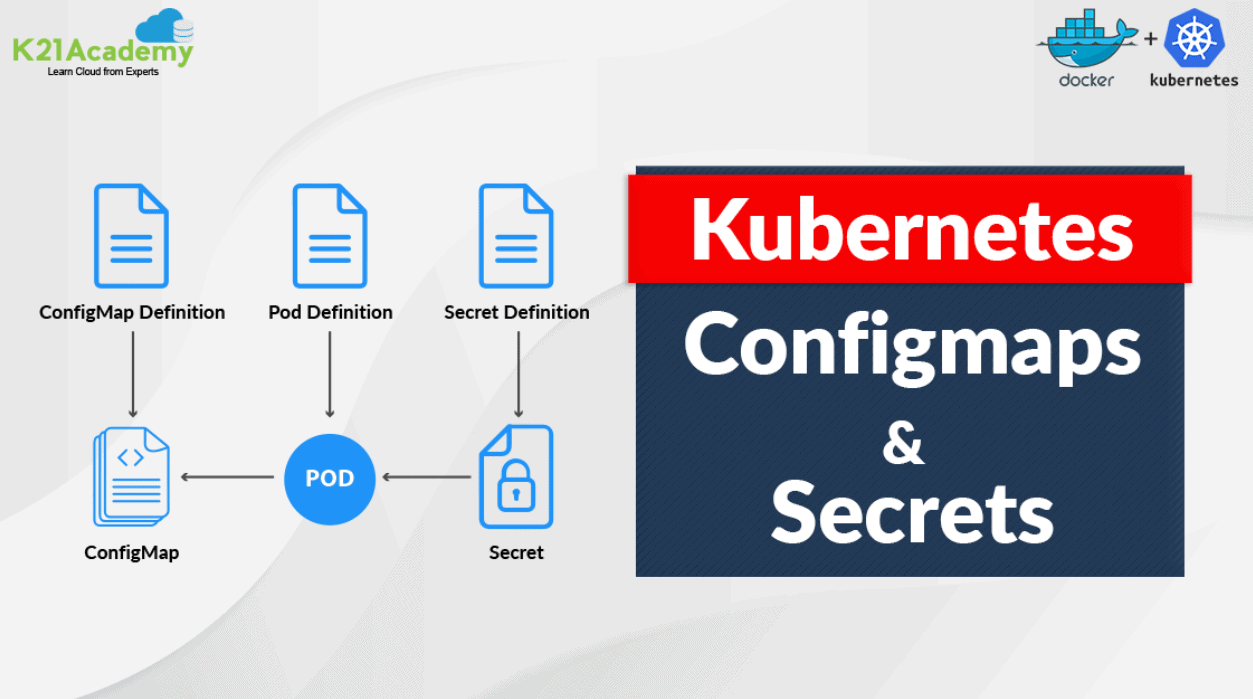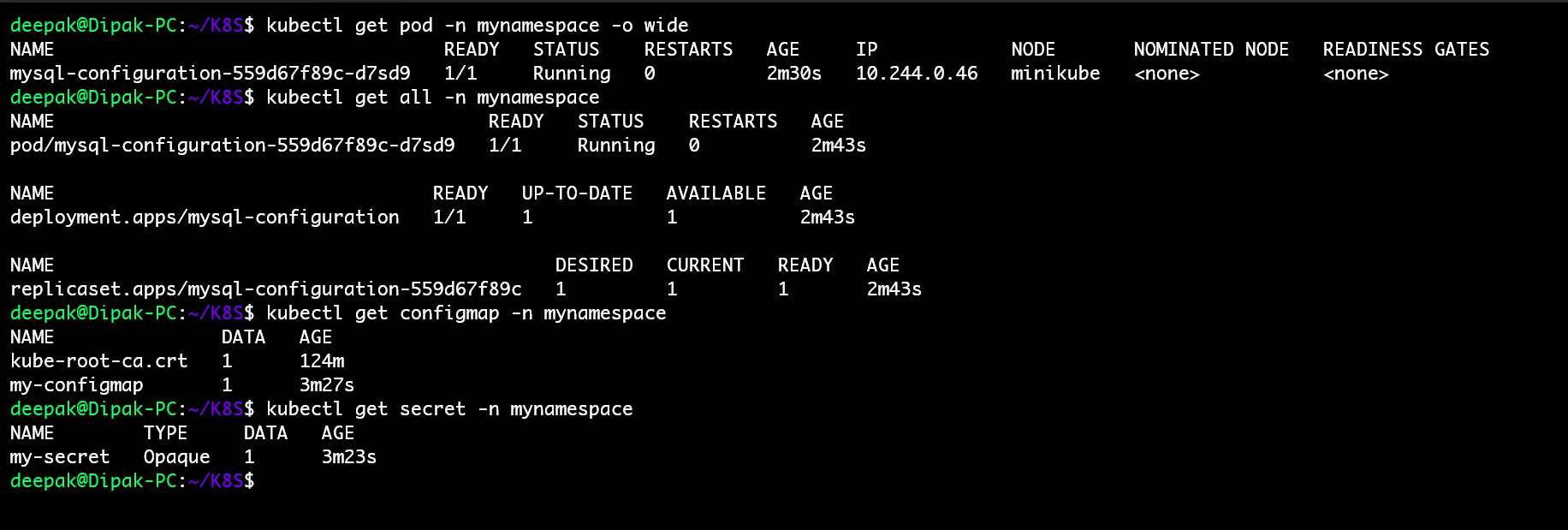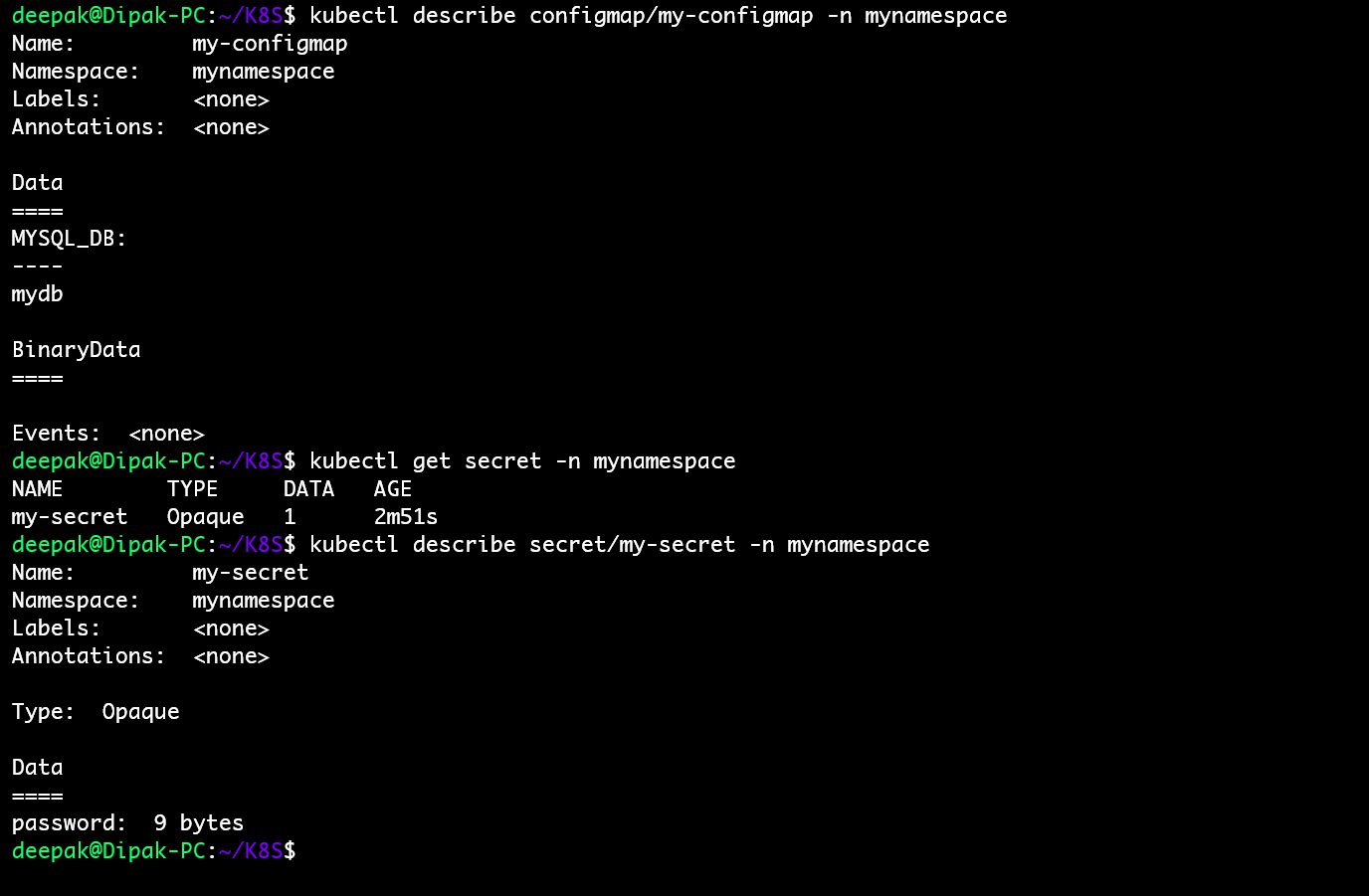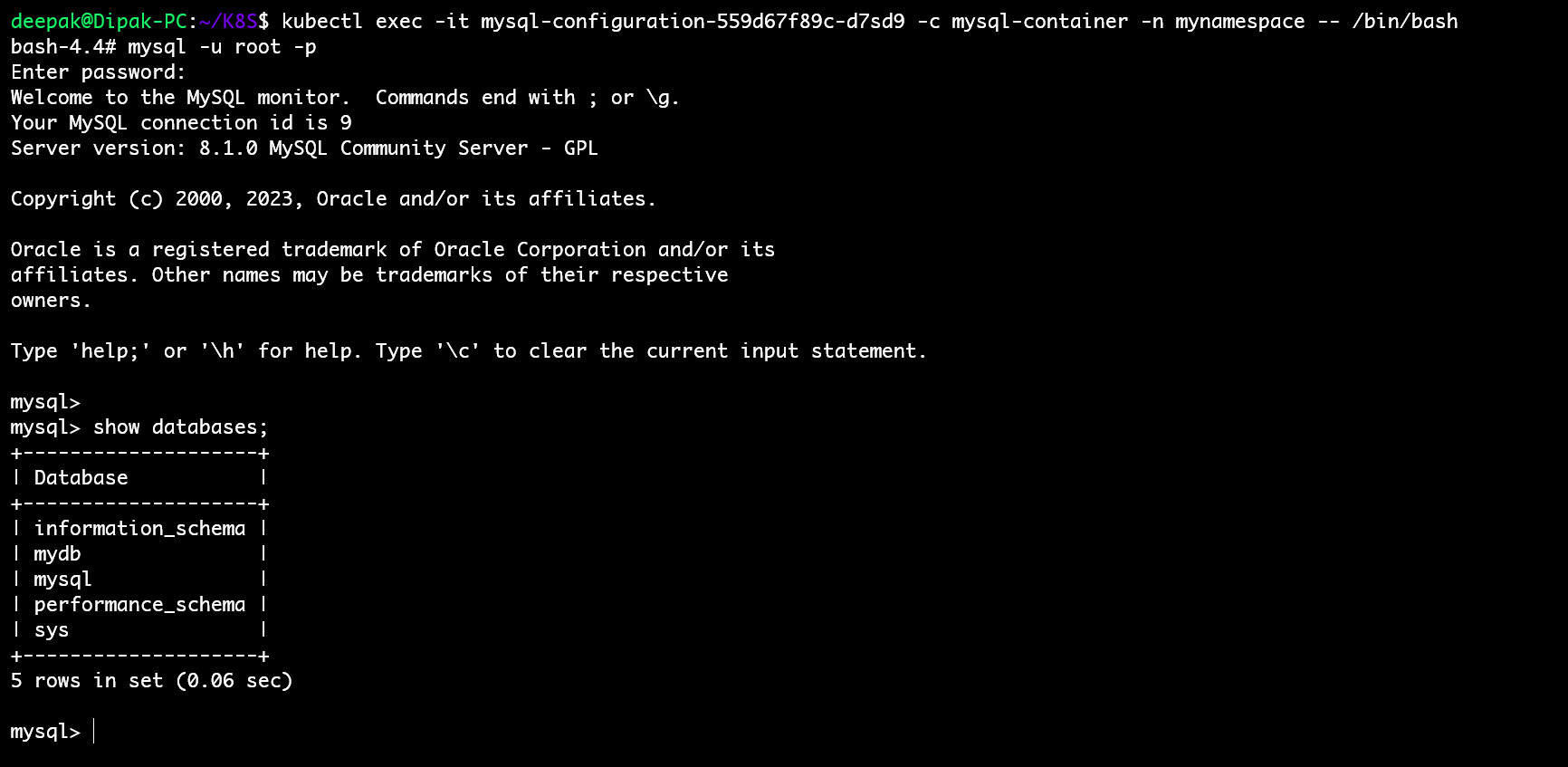☸️ Kubernetes ConfigMap and Secret: Unlocking Application Configuration and Secrets 🔒🔑🛡️
 Deepak Patil
Deepak Patil
Introduction
Kubernetes is popular for its flexibility and robustness in managing containerized applications. Two vital components for achieving this are ConfigMaps and Secrets. In this blog, we'll delve into the world of ConfigMaps and Secrets.
ConfigMaps and Secrets in Kubernetes are essential for managing configuration data and sensitive information. Here are scenarios where you would use ConfigMaps and Secrets:
🧰 ConfigMaps
ConfigMaps provides a way to store configuration data separately from your application code. They are like a treasure chest of configuration settings that your applications can access without hardcoding.
In Kubernetes, ConfigMaps and Secrets are used to store configuration data and secrets, respectively. ConfigMaps stores configuration data as key-value pairs.
In this blog, we are using the ConfigMap and Secret for Mysql Database
🏗️ Creating a ConfigMap
You can create a ConfigMap using a YAML manifest file like this:
apiVersion: v1
kind: ConfigMap
metadata:
name: my-configmap
namespace: mynamespace
data:
MYSQL_DB: "mydb"
Explanation:
As of now, we know about the
Manifest YAMLfile and its attributesHere the new thing is
data:.data: This is where you definekey-valuepairs for your configuration settings. In this example, we have 1 key-value pairs:MYSQL_DB.
✍ Using a ConfigMap in a Pod
Here's a YAML manifest file for creating a Pod that uses the ConfigMap my-configmap:
apiVersion: apps/v1
kind: Deployment
metadata:
name: mysql-configuration
namespace: mynamespace
labels:
app: mysql
spec:
replicas: 1
selector:
matchLabels:
app: mysql
template:
metadata:
namespace: mynamespace
labels:
app: mysql
spec:
containers:
- name: mysql-container
image: mysql:8
ports:
- containerPort: 3306
env:
- name: MYSQL_DATABASE
valueFrom:
configMapKeyRef:
name: my-configmap
key: MYSQL_DB
Explanation:
- In the
envsection, we define environment variables. For thisMYSQL_DATABASE, we set its value using a reference to themy-configmapConfigMap. This is done viaconfigMapKeyRef, where we specify thenameof the ConfigMap and thekeywe want to use. This way, the value ofMYSQL_DBin the ConfigMap is injected as an environment variable into the container.
🔐Secrets:
Secrets are akin to ConfigMaps but are designed specifically for sensitive data, such as passwords, API keys, or TLS certificates. They provide an additional layer of security for critical information.
🏗️ Creating a Secret
Here's a YAML manifest file for creating a Secret named my-secret:
Before that, we are passing the password value into the data field in base64 encrypted format so let's make the password base64 encrypted.
echo -n 'dipak@123' | base64
# ZGlwYWtAMTIz
echo -n 'ZGlwYWtAMTIz' | base64 --decode
#dipak@123
apiVersion: v1
kind: Secret
metadata:
namespace: mynamespace
name: my-secret
type: Opaque
data:
password: ZGlwYWtAMTIz
Explanation:
type: Hre we use an
opaque secret, allows for unstructuredkey:valuepairs that can contain arbitrary values.data: This is where you definekey-valuepairs for your configuration settings. In this example, we have 1 key-value pairs:passwordin a base64 encrypted format.
✍ Using a Secret in a Pod
We have our Deployment file just add the new env variable attach the secret there and update the Deployment file.
apiVersion: apps/v1
kind: Deployment
metadata:
name: mysql-configuration
namespace: mynamespace
labels:
app: mysql
spec:
replicas: 1
selector:
matchLabels:
app: mysql
template:
metadata:
namespace: mynamespace
labels:
app: mysql
spec:
containers:
- name: mysql-container
image: mysql:8
ports:
- containerPort: 3306
env:
- name: MYSQL_DATABASE
valueFrom:
configMapKeyRef:
name: my-configmap
key: MYSQL_DB
- name: MYSQL_ROOT_PASSWORD
valueFrom:
secretKeyRef:
name: my-secret
key: password
🧾 Applying ConfigMap & Secret
Run the below command to create the required(ConfigMap, Secret, Deployment) object.
kubectl apply -f <file-name>


Login Into the container running inside the Pod using the command.
kubectl exec -n <namespace here> <pod-name> -c <container-name> -it -- /bin/sh
Once you log in to the container you are inside the container then login to the MySQL database running inside the container using the command.
mysql -u root -p <your-decrepted password>
Then hit the command to show the database we have specified in the ConnfigMap file.
show databases;

📝Summary
ConfigMaps (🧰) store configuration data and are excellent for decoupling configuration from application code.
Secrets (🔐) secure sensitive information and are indispensable for safeguarding credentials and certificates.
ConfigMaps and Secrets are like the keys to unlocking the full potential of your Kubernetes applications. Use them wisely to streamline configuration management and secure your sensitive data. 🌟
Thank you🙏🙏... for taking the time to read this blog. I hope you found the information helpful and insightful. So please keep yourself updated with my latest insights and articles on DevOps 🚀 by following me on
So, Stay in the loop and stay ahead in the world of DevOps!
Happy Learning !... Keep Learning ! 😊
Subscribe to my newsletter
Read articles from Deepak Patil directly inside your inbox. Subscribe to the newsletter, and don't miss out.
Written by

Deepak Patil
Deepak Patil
Hey there! I am Deepak!! Passionate About Cloud & AWS☁️| DevOps ♾️ Technologies 👩🏻💻 And Skilled with Git 🔀 | Docker 🐳 | Kubernetes ☸ | Jenkins 🛠️ 👏 Welcome to my blog!!